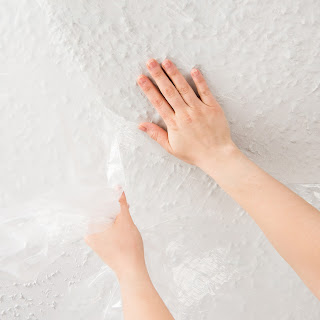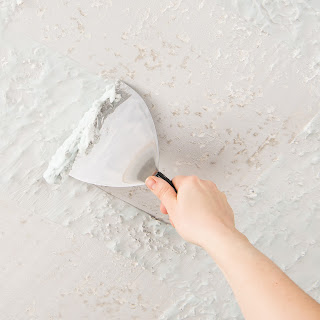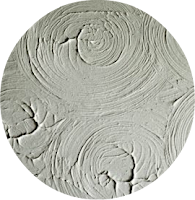Recognize and avoid the most common toxins
found in homes today.
Indoor air can have higher concentrations of toxins than outdoor air. Ironically, these chemical toxins come from the products we use to make our lives better.
Realistically, most consumers are unable or do not have the time or expertise to monitor products and materials for hazardous material content. But there a few simple strategies which can be taken to reduce exposure to toxins in the home.
- Know the most common toxins that are found in homes today
- Find safe substitutes, mitigate the hazard or do without the product
- Ventilate your home regularly, especially during the winter months
The Most Common Toxins Found in Homes Today
1. Volatile Organic Compounds (VOCs)
VOCs are a group of chemicals that vaporize easily and bring gas pollutants into the home from a variety of sources. There are over 400 compounds in the VOC family that have been identified in the home and of these over 200 can be found in carpeting. According to the EPA, VOCs tend to be even higher (two to five times) in indoor air than outdoor air, likely because they are present in so many household products.
Risks
Eye and respiratory tract irritation, headaches, dizziness, visual disorders, and memory impairment; chronic exposure increases the risk of cancer, liver, kidney and central nervous system damage. Persons with respiratory problems such as asthma, young children, the elderly, and persons with heightened sensitivity to chemicals may be more susceptible to irritation and illness from VOCs.
Sources
New carpets and home furnishings, interior paints, paint removal products, particleboard, plywood and pressed wood products, new plastics and electronics, deodorants, cleaning fluids, varnishes, shampoos and cosmetics, dry cleaned clothing, moth repellents, air fresheners, and during the burning of wood stoves and tobacco products.
How To Minimize Exposure:
Avoid Products with High VOC Content: Look for “Low-VOC” and “Zero-VOC” paints and finishes for indoor painting. The same goes for paint and finish removal products. Buy solid wood, hardboard or ‘exterior grade’ plywood in place of pressed wood products. Establish a “no smoking” policy in your home. Consider buying antique furniture.
Ventilate: By increasing ventilation, you can lower the concentration of VOCs in your home. If new carpeting or vinyl flooring has been installed, or a room freshly painted, open windows and doors, and use a house fan to direct the room air outwards.
Allow New Products to Off-Gas Before Bringing Them Into the Home: If you just bought a new stuffed couch, for example, unwrap it and leave it in the garage for a couple of days before bringing indoors. Seal particle board or pressed wood items with varnish or paint before bringing them indoors.
2. Pesticides
According to the EPA, 60 percent of herbicides, 90 percent of fungicides and 30 percent of insecticides are known to be carcinogenic. Alarmingly, pesticide residues have been detected in 50 percent to 95 percent of U.S. foods.
Risks
Irritation of eye, nose and throat, damage to CNS and kidney, increased risk of cancer, Parkinson’s disease, miscarriage, nerve damage, birth defects, blocking the absorption of food nutrients.
Sources
Food (some fruits, vegetables and commercially raised meats), household pest control products and sprays, and some chemical lawn treatments which drift or are tracked indoors.
How To Minimize Exposure:
Establish A ‘No-Shoes’ Policy in Your Home: The simplest way to keep outdoor pesticides, especially lawn chemicals, from entering your home is to have family members and visitors leave their shoes at the door. This will also reduce the need for home cleaning.
Avoid Using Chemical-Based Pest Control Products in the Home: There are safe alternatives for pest control available today which can effectively control most insect pests without the need for harmful chemicals. Pest control products with chemical formulations should be used only where the more benign product fails to remedy the insect problem.
Buy Fresh, Organic Produce: For the freshest organic vegetables, grow your own produce in a simple backyard garden. Or choose foods that are known to have fewer pesticides applied during the growing season.
3. Mold and Other Fungal Toxins
One in three people has had an allergic reaction to mold. Mycotoxins (fungal toxins) can cause a range of health problems with exposure to only a small amount.
Risks
There is no consensus among scientists about the health hazards of mycotoxins. Mycotoxins may have toxic effects ranging from irritation of mucous membrane to suppression of the immune system and cancer.
Sources
Contaminated buildings, damp areas with frequent temperature changes, airborne particles from furnace blower or air conditioning unit.
How To Minimize Exposure:
- Keep filters clean on heating, ventilating, and air conditioning systems
- Remove any water sources to mold affected area; dry thoroughly
- Keep relative humidity below 60%, which may require a dehumidifier in some areas
- Store items with high cellulose content (newspapers, drywall, cardboard) in dry areas
4. Phthalates and PVC (Polyvinyl Chloride)
PVCs contain phthalates, a class of widely used industrial compounds known technically as dialkyl or alkyl aryl esters of 1,2-benzenedicarboxylic acid. There are many phthalates with many uses, and just as many toxicological properties. These chemicals are used primarily to lengthen the life of fragrances and soften plastics.
Risks
Endocrine system damage (phthalates chemically mimic hormones and are particularly dangerous to children). Researchers have associated pregnant women’s exposure to phthalates with adverse effects on the genital development of their children. These risks may even prevail in low-dose exposure.
Sources
Plastic wrap, plastic bottles, plastic food storage containers, which can leach phthalates into our food. PVC in some consumer products such as vinyl flooring, drapes and wall-coverings, baby’s toys, shower curtains, blow-up air mattresses, cosmetics and fixatives.
How to Minimize Exposure:
- Check the label of baby products to ensure they are phthalate-free.
- When buying plastic products for the home, ask if they contain PVC or phthalates.
- Avoid eating food stored or microwaved in PVC plastic.
- Look for recycling code #3 or V to spot PVC products before they enter your home.
- Look for PVC-free draperies, window blinds and shades; choose natural fibers such as cotton, linen, wood, bamboo, silk or hemp.
5. Heavy Metals
Metals like arsenic, mercury, lead, aluminum and cadmium, which are prevalent in many areas of our environment, can accumulate in soft tissues of the body.
Risks
Cancer, neurological disorders, Alzheimer’s disease, foggy head, fatigue, nausea and vomiting, decreased production of red and white blood cells, abnormal heart rhythm, damage to blood vessels.
Sources
Drinking water, some seafood, vaccines, pesticides, preserved wood, antiperspirant, building materials, dental amalgams, chlorine plants, lead paints.
How To Minimize Exposure:
- Install water filters.
- Use cold water for drinking, making tea or coffee, and cooking.
- Avoid fish high in mercury, such as king mackerel, tilefish, swordfish, shark, orange roughy, and marlin. Limit consumption of tuna, especially steaks and canned ‘white’ albacore.
- If your home was built before 1978, check for lead paint.
- Avoid buying products made with PFC, such as Teflon cookware and Scotchgard.
- Avoid using treated wood (CCA or ACZA) on decks or children’s play structures.
General Strategies to Reduce Toxin Levels in the Home
While it is difficult to identify a specific toxin in the home and take appropriate measures to contain exposure to it, here are some general strategies to reduce the overall level of toxins in the home:
Only Use Natural Cleaning Products in Your Home
Most health food stores will have these available or you can make your own cleaning products using safe ingredients.
Avoid Using:
Avoid using artificial air fresheners, dryer sheets, fabric softeners or other synthetic fragrances as they can pollute the air you are breathing.
Establish a ‘No Shoe’ Policy in Your Home
To drastically reduce the number of pesticides and other chemicals that you may pick up outside, have visitors and family members leave shoes at the door. Residuals of toxic chemicals may last for years in carpets.
Avoid Using Lawn Care Chemicals
Residue is easily tracked indoors where chemicals can persist in carpeting and furnishings. Use natural lawn care methods which eliminate the need for chemical fertilizers and herbicides.
Avoid Using Chemical Pest Control Products
There are safe, non-toxic alternatives for controlling insect pests in the home, including many new non-toxic pest control products for the homeowner.
Use Low-VOC Paints, Removers, Caulks, Sealants, Finishes, and Carpeting
Look for low-VOC labelling on sealing and finishing products. Most major paint brands now carry ‘low’ and ‘zero’ VOC lines for interior painting. For low-VOC paint and coating, removers
click here
Use Toxin-Reducing Houseplants
Researchers from NASA have identified certain houseplants which are useful in absorbing potentially harmful gases and cleaning the air inside homes.
Change or Clean Your Furnace or A/C Filters
At least once every 1-3 months depending on use.
Ventilate
Modern homes and businesses are created to be leakproof; meaning, toxins are sealed in and fresh air is sealed out! To ventilate indoor air in winter, open doors and windows on opposing sides of the room to facilitate airflow, and close them in 5 – 10 minutes. The furnishings, drywall and any stonework will retain residual heat and restore room temperatures quickly.



















































